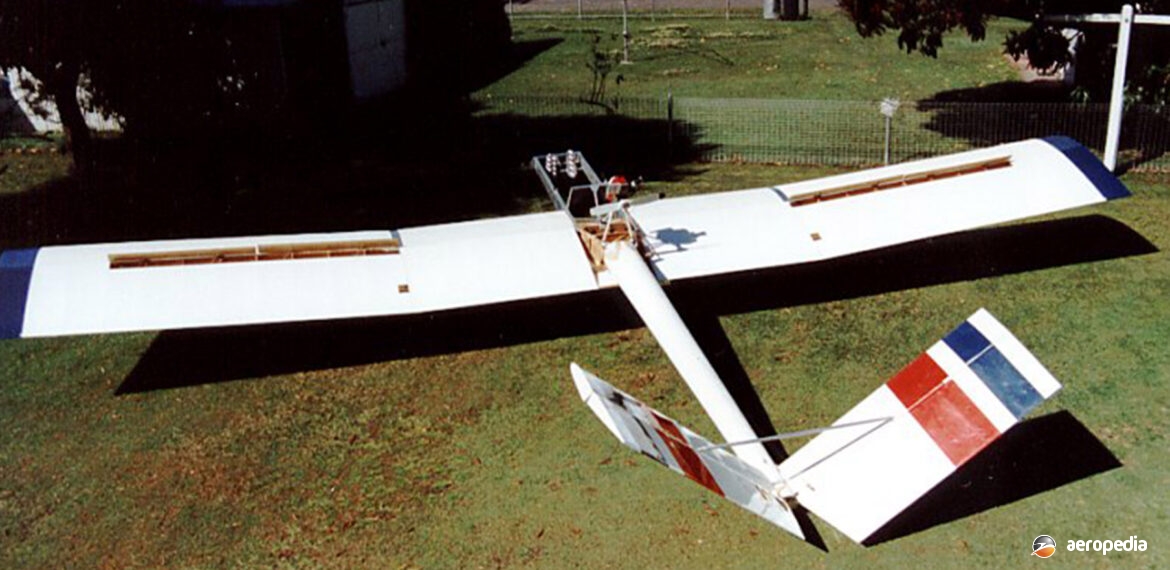Photograph:
Birdman TL-1 after erection at Hendra, Qld (Ken Woodrow)
Country of origin:
United States of America
Description:
Single-seat light sport aircraft
Power Plant:
One 7.46 kw (10 hp) McCulloch 101A single-cylinder air-cooled engine
Specifications:
- Wingspan: 10.36 m (34 ft)
- Length: 6.1 m (20 ft)
- Height: 2.21 m (7 ft 3 in)
- Wing area: 13.38 m² (144 sq ft)
- Max speed: 72 km/h (45 mph)
- Cruising speed: 61 km/h (38 mph)
- Initial rate of climb: 76 m/min (250 ft/min)
- Service ceiling: 1,540 m (5,500 ft)
- Empty weight: 60 kg (131 lb)
- Loaded weight: 159 kg (350 lb)
History:
The TL-1 was designed and marketed by Birdman Aircraft Inc of Daytona Beach International Airport, Florida, USA with the idea of selling a sturdy, lightweight aircraft which was inexpensive to build and operate, and which could be assembled with ease by a novice builder. To achieve this goal a number of unusual features were incorporated. One was the covering of the aircraft, which consisted of a bi-axially oriented synthetic film known as Monokote, this offering a combination of light weight and strength.
The machine became, at the time, the world’s lightest powered aircraft, design of the prototype beginning in 1969. It was flown for the first time on 25 January 1975, much structural testing taking place during this period. The first completed aircraft was exhibited at the Sun ‘N Fun Fly-in at Lakeland, Florida on 22 January 1976.
It was marketed in kit form, with all materials, components, engine and accessories being provided, together with a builder’s manual. By February 1976 over 200 kits had been distributed, and three years later the number had reached 300.
Power was provided by an 11 kw (15 hp) Tally aircraft M.C.101 DT single-cylinder two-stroke engine but other similar units could be installed.
The pilot flew the aircraft in an upright or semi-reclining position, being exposed to the elements, and was provided with a seat and harness, adjustable to the pilot’s needs.
Construction of the wing was with a wooden spar, wooden ribs, leading-edge D-cell of reinforced expanded synthetic foam and Monokote covering. The fuselage was built in three parts, the front part being of semi-monocoque light alloy, riveted together. The centre section was of wood and the rear section was of tapered plywood construction. It had a fixed tail-wheel undercarriage.
At least one was completed in Australia, being retired and donated to the Queensland Air Museum at Caloundra in August 1988.

